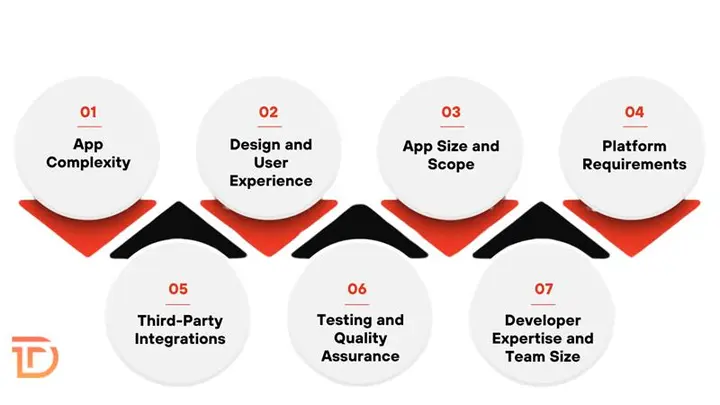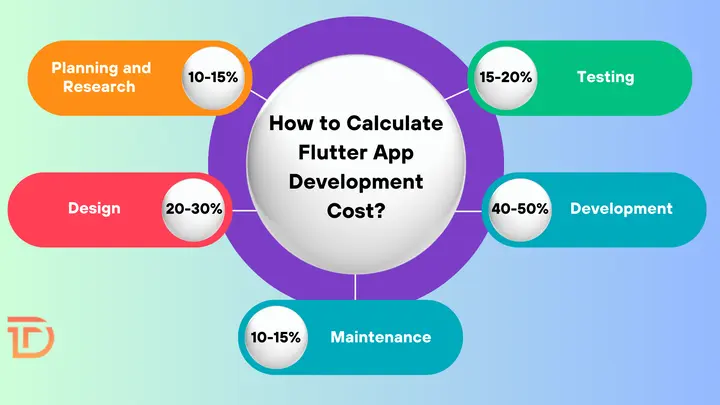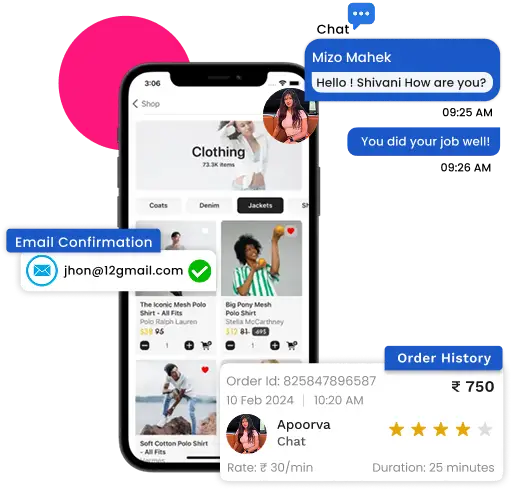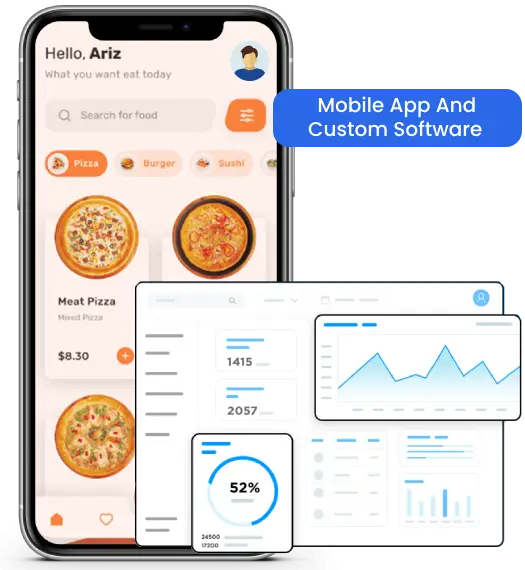Flutter, a popular open-source framework for building cross-platform mobile applications, has gained significant traction among developers due to its ability to create high-quality apps with a single codebase for both iOS and Android. However, one of the most common questions asked by businesses looking to develop a mobile app is: “How much does Flutter app development cost?”
In this blog, we will explore the factors affecting the cost of developing a Flutter app, how to calculate the development cost, how Flutter helps reduce costs, examples of Flutter apps with timeline and cost breakdown, and location-based cost variations.
Factors Affecting the Cost of Developing a Flutter App
When estimating the Flutter app development cost, several factors play a crucial role in determining the final price. These include:

App Complexity
The complexity of the app is one of the most significant factors affecting the cost. Simple apps with minimal features will naturally cost less to develop compared to complex apps that require advanced functionalities like real-time updates, integration with third-party APIs, or advanced graphics. The more sophisticated the features, the more time and resources the development team will need, thus increasing the overall cost.
Design and User Experience
The design of an app is another essential factor that impacts the development cost. Apps that require custom designs, animations, or intricate interfaces will demand more time and effort from the design team. A clean, intuitive, and attractive user interface (UI) typically requires more resources, which can lead to higher costs.
App Size and Scope
The number of features, screens, and functions the app needs will directly affect the overall development cost. A simple app with a few basic functions will be much cheaper to develop than a feature-rich app requiring more screens, user roles, and functionalities. The larger the app, the more time it will take to develop, test, and deploy.
Platform Requirements
Although Flutter allows developers to create a single codebase for both iOS and Android apps, there might still be platform-specific requirements that influence cost. If you want to add specific features for one platform or ensure unique optimizations for iOS or Android, this may increase the development time and, consequently, the cost.
Third-Party Integrations
Apps often require third-party integrations like payment gateways, social media logins, GPS, or cloud storage. Depending on the complexity and availability of these integrations, the cost could vary. Additionally, licensing and API costs can add up, especially when dealing with premium services.
Testing and Quality Assurance
The testing phase is essential to ensure the app runs smoothly on different devices, screen sizes, and operating systems. Apps developed with Flutter are tested on both Android and iOS devices, which requires additional time and resources. The more extensive the testing, the higher the cost.
Developer Expertise and Team Size
The skills and experience of the development team can significantly affect the cost. Highly experienced developers who are proficient in Flutter development may charge higher rates. Additionally, the size of the development team—whether you need additional UI/UX designers, backend developers, or project managers—also impacts the cost.
How to Calculate Flutter App Development Cost?
Calculating the cost of flutter app development can be done by breaking down the entire process into specific stages, including:

Planning and Research
The planning phase involves defining the app’s purpose, target audience, features, and functionality. It’s essential to conduct market research to understand the competition and what features will differentiate the app. This phase usually accounts for about 10-15% of the total development cost.
Design
App design is the first tangible step in the development process. This phase involves creating wireframes, prototypes, and high-fidelity UI designs. Depending on the complexity and number of screens, design costs can range from 20-30% of the total budget.
Development
Development is where the bulk of the cost lies. For Flutter apps, developers will need to create the codebase for both iOS and Android platforms. This phase typically consumes around 40-50% of the overall budget. The cost will increase if there are additional features, third-party integrations, or more complex functionalities.
Testing
Testing is a critical phase for ensuring the app’s performance and user experience. Quality assurance (QA) specialists run tests on various devices to ensure the app works across platforms without bugs. This phase usually accounts for 15-20% of the total cost.
Deployment and Post-Launch Maintenance
After testing and final adjustments, the app is ready for deployment. However, the process doesn’t end here. Post-launch support, including bug fixes, updates, and possible feature additions, is crucial. Maintenance costs can be 10-15% of the initial development cost.
By considering all of these phases, you can estimate the total cost of Flutter app development.
How Flutter Helps Reduce Cost of Creating Mobile Apps
Flutter is well-known for its ability to create cross-platform apps, meaning that developers can write a single codebase for both iOS and Android. This eliminates the need for separate development teams and reduces overall development time, which directly translates into cost savings. Here are some ways Flutter helps reduce the cost of mobile app development:
Single Codebase for Multiple Platforms
Flutter’s ability to use a single codebase for both Android and iOS apps significantly reduces development time and resources. This eliminates the need for writing and maintaining two separate codebases, which would otherwise increase the cost.
Hot Reload Feature
Flutter’s “hot reload” feature allows developers to quickly apply changes to the app and instantly view the results. This speeds up the development process, reducing the time and cost spent on testing and iteration.
Rich Set of Pre-Built Widgets
Flutter provides a wide variety of pre-built widgets and tools that developers can use to speed up the development process. By utilizing these reusable components, developers can save time and effort, reducing the overall cost of app development.
Cost-Effective Maintenance
Since Flutter uses a single codebase, maintaining the app across both platforms is easier and more cost-effective. Developers don’t need to update and patch two different codebases, which saves time and resources during the maintenance phase.
Examples of Flutter Apps With Timeline and Cost Breakdown
To better understand the cost, let’s look at a few examples of Flutter app development projects, along with their timeline and cost breakdown.
| Example | Features | Timeline | Cost Breakdown | Estimated Cost |
|---|---|---|---|---|
| Simple E-commerce App | User authentication, product listings, shopping cart, basic payment integration | 2-3 months |
| Mid-range budget |
| Social Media App | User profiles, messaging, notifications, real-time updates | 3-4 months |
| High budget |
Location Wise Flutter App Development Cost
The cost of Flutter app development varies significantly based on the location of the development team. Here’s a general breakdown of app development costs by region:
| Region | Average Hourly Rate | Description |
|---|---|---|
| North America | $100 – $150 per hour | High development costs due to the cost of living and labor in countries like the US and Canada. Typically, premium services and highly skilled developers are available. |
| Europe (Western) | $70 – $120 per hour | Countries like the UK, Germany, and France offer experienced developers, with rates varying based on location. Development tends to be more expensive than in Eastern Europe. |
| Europe (Eastern) | $30 – $60 per hour | Countries like Ukraine, Poland, and Romania offer affordable development services without compromising quality. |
| India | $20 – $50 per hour | India is one of the most affordable locations for Flutter app development, offering a large pool of skilled developers. The lower cost of living allows for competitive pricing while maintaining quality. |
| Asia (Other regions) | $20 – $50 per hour | Countries like Vietnam, the Philippines, and Indonesia offer cost-effective services with experienced developers. |
| Australia | $80 – $130 per hour | Development rates in Australia are on the higher end, though slightly less than North America. Developers are highly skilled, and the region offers good quality services. |
Summing Up Everything
Flutter is a powerful framework that can help reduce the cost of mobile app development by allowing developers to create cross-platform apps with a single codebase. The cost of developing a Flutter app depends on various factors such as app complexity, design, developer expertise, and location. By considering these factors and breaking down the development process into stages, businesses can better estimate the cost of their app development projects and make more informed decisions.
Ultimately, Flutter offers a cost-effective solution for businesses looking to build high-quality mobile apps while keeping development expenses in check. Get started with your mobile application creation journey with Dreamer Technoland— a reliable software and app development company in India. Connect with us to hire certified Flutter developers with multiple years of industry experience.







